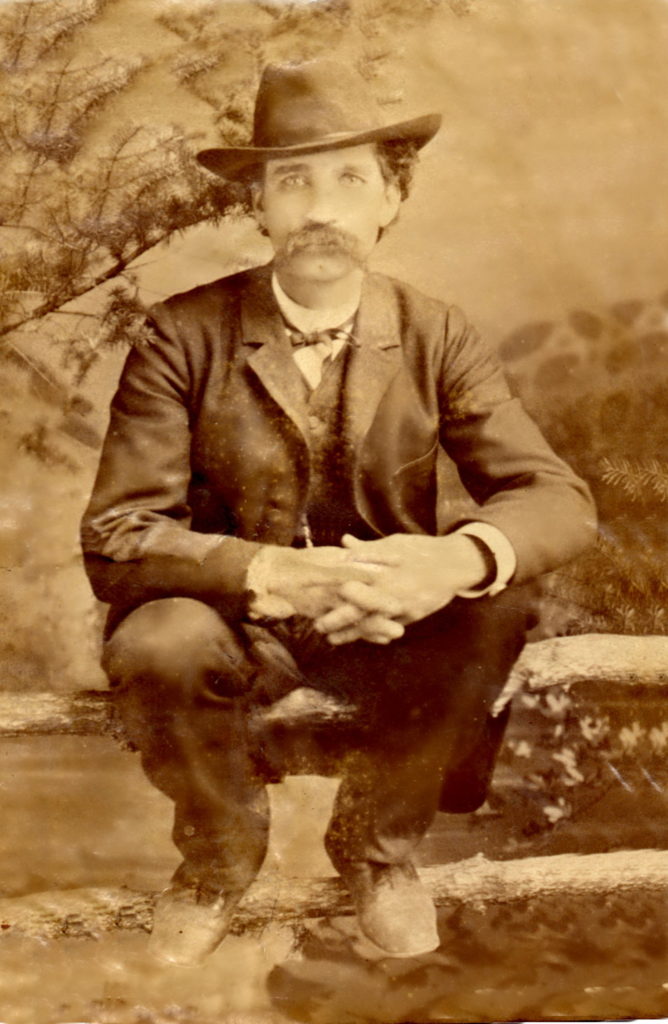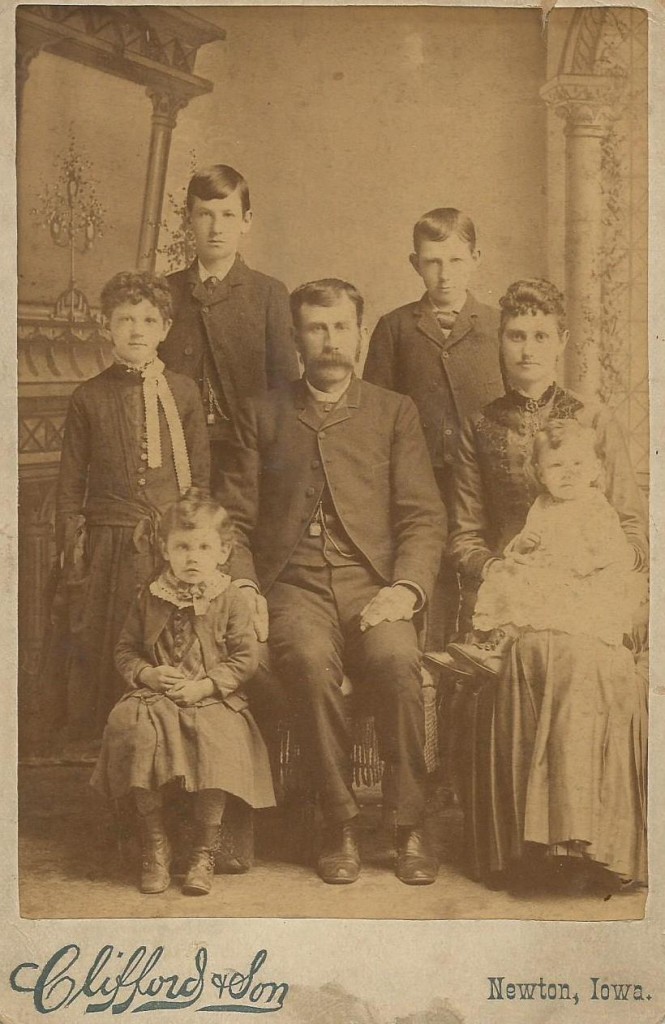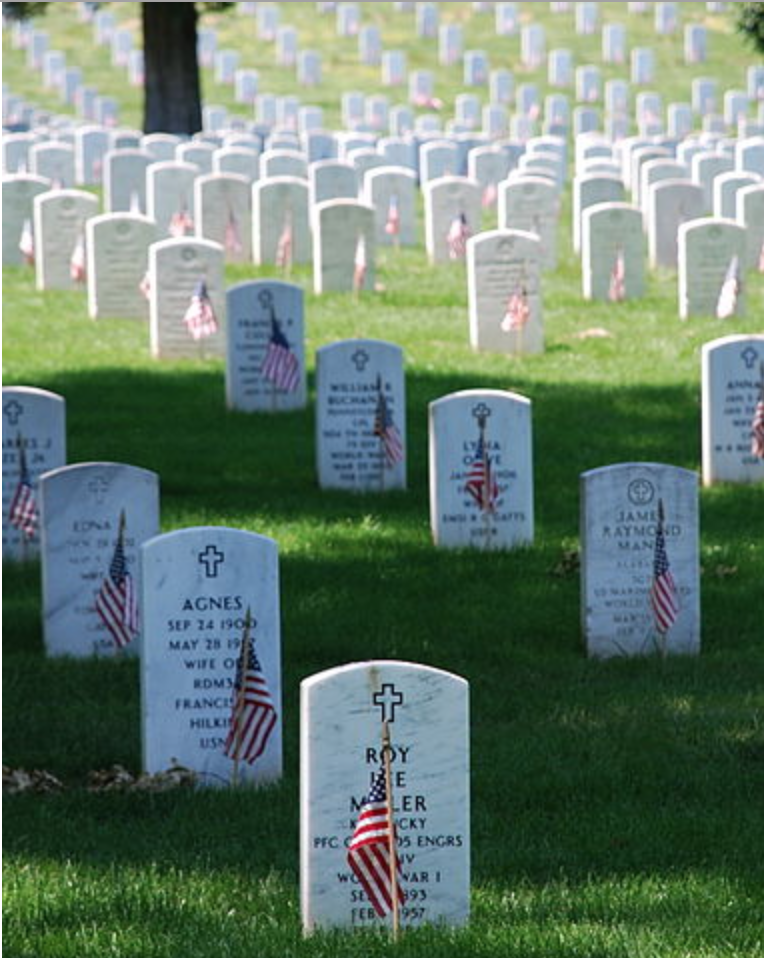Emmanuel Clutter and Frances “Fannie” Drucilla Benjamin Clutter, Part 1

Benjamin Family, McMurray Family (Click for Family Tree)
What a great picture! A first impression was, “This man has a story.” Well, we all have a story, but this appeared to be a story that might have a few twists and turns plus some interesting research. Also, Emanuel Clutter married Frances “Fannie” Drucilla Benjamin, the sister of our ancestor Hannah Melissa Benjamin McMurray, so he is kin, and we should tell his story, as well as Fannie’s. Additionally, sometimes one can learn more about a direct ancestor by researching siblings, so there was the hope of learning more about Hannah Melissa or their parents, Sylvanus Rufus Benjamin and Sarah Ann Palmer Benjamin.

Emanuel was born on Dec. 3, 1846, in Licking County, Ohio, where Fannie was born as well on June 4, 1843. Emanuel’s parents were James I. Clutter (1806-1896), born in Pennsylvania, and Rhoda Myers Clutter (1815-1897), born in Licking County. The Clutters likely knew Fannie’s parents, Sylvanus Rufus “S.R.” Benjamin (1819-1892), who was born in Licking County too, and Sarah Ann Palmer Benjamin (1822-1911), who was born in Ohio probably but some records state Kentucky. Licking County is located about the center of the state, and includes Columbus, Ohio today. Knox County is adjacent and just north of Licking, and where the Clutters lived at one point.

In 1850, both families lived in Burlington Township, probably on farms since both fathers were listed as farmers in the 1850 US Federal Census. They probably saw each other at the feed store or grocer, at community events, and maybe even attended the same church. As lands opened up out west, it is likely that migration was a hot topic of conversation in the community, especially when one or more families sold off, packed up, and moved to a new beginning.
James and Rhoda Clutter stayed in Ohio with some of their children, but others migrated west. We have not found Emanuel in the 1860 US Federal Census anywhere, including not with his parents and siblings in Ohio.We have not found him in 1870, either.
S.R. Benjamin and family were living in Burlington, where the Clutters lived, at the 1860 census as the division of our country over slavery increased rapidly. War was declared and the Union became desperate for soldiers by 1863. S.R. was actually drafted as a part of the “Old Man’s Draft”- he was 42- but he paid a substitute to serve for him instead. The Benjamin family then migrated all together to Jasper County, Iowa in 1865 or 1866- the year varies in obituaries of the children.
Did Emanuel just get missed on the 1860 census, and then migrate with the Benjamins? Was Emanuel working in Cedar County, Iowa, as a photographer/artist, since some of the pictures in the Clutter Photo Album were taken there? Or had Emanuel gone to work in Iowa and his sweetheart and her family followed after he told them how wonderful it was? (The Benjamins had another reason for the migration- that story is still to come as it was just found less than an hour before this was written, and needs a bit more research before telling.)
Some sources/trees state that Emanuel and Fannie married in Ohio, but apparently not- they were issued a license to marry in Jasper County, Iowa, on 29 December 1868. Fannie’s obituary states that they married about three years after she migrated to Jasper County with her family in 1865. We have not found a record of the actual marriage, but that is not unusual for this time period.
In the Jasper County, Iowa 1870 census, S. R. Benjamin, age 49, was listed as a farmer with real estate valued at $9,000 and a personal estate of $1,325. His wife Sarah Ann Palmer Benjamin, 48, was “keeping house.” Their son John Elliot Benjamin, 21, was still in the household and listed as a farmer, with his new wife “L.M.” Boydston Benjamin helping Sarah with the household- and ‘women’s’ farm chores. Daughter Hannah Melissa Benjamin (our direct ancestor, AKA, “The Scary Lady” in later years) was just 16 and attending school. Emanuel Clutter, age 23, and his wife Fannie were also living in the household, with Emanuel listed as an “artist” in the census, and Frances, naturally, ‘keeping house.’ Emanuel may have been an “artist” working in the photography business in Newton at this time, as per our previous postings on the Clutter Family Photo Album.
The third Benjamin daughter, Cynthia Adeline Benjamin, had married Reuben K. Lambert in Ohio, and they migrated to Jasper County with their two children who had been born in Ohio, Willie Rufus Lambert and Elliott Ellsworth Lambert. They may have traveled with the rest of the Benjamin family. The Lamberts were enumerated just before the S.R. Benjamin family in the 1870 US Federal Census in Jasper County, Iowa, so may have had adjoining farms. (The Lamberts did later have a daughter, Ida Bell Lambert, born in Jasper County, Iowa.)
Fannie and Emanuel Clutter had been married for five years before the only child we know of, Rufus E. Clutter, was born to them in 1873. This is a longer gap than usual between marriage and first child for those days, so there may have been children born before Rufus who did not survive. Rufus did grow up, marry (to Mattie J. “Madge” Small), and became a father to Donald F. Clutter (1896-1984).

A recent very cold fall visit to Newton Union Cemetery in Jasper County, Iowa, with the bitter winds whipping across the prairie but the warmth of family togetherness both above and below the cold ground (thanks for the fun above-ground cemetery time, cousin! ;D), made us think of what our pioneer ancestors dealt with as they worked their farms every day. Even when crops were not growing, animals needed tending and repairs to buildings, fences, and equipment were required. The family also needed to be fed, bedding and clothing cleaned, repaired, and even sewn from only a bolt of cloth. Dealing with the weather must have been brutal at times. So we found our pioneer fortitude genes within and searched for the Benjamin section of the cemetery as well as the McMurray plots, since Hannah Melissa Benjamin married Frederick Asbury McMurray. It was a surprise to find Frances/Francis/Fannie Benjamin Clutter’s stone in the group with the Benjamins, especially since Emanuel Clutter had no stone alongside, nor in that cemetery.

A search back through our records for Fannie’s obituary revealed more of the story:
“Mrs. Frances D. Clutter died at the home of her mother, Mrs. S.R. Benjamin… For over twenty-five years Mrs. Clutter had been an invalid, and the closing weeks of her life were especially marked with suffering, so that the death came as a blessed boon to her the beginning of a new life in which pain, sorrow and tears will never be known.”
Fannie was just 55 years old at her death- she had been very ill for almost half her life!
“Although her life had been one strangely mixed with sorrow as well as physical suffering, her Christian trust and faith never deserted her for a moment.”
Rufus, her son, had come from Chicago to be with Fannie during her last days, and her dear mother was there as well. (Her father had died in 1892.)
But what about Emanuel? There is no mention of him except that they married.
Stay tuned.
Notes, Sources, and References:
- History of Knox County, Ohio, its past and present…, by N.N. Hill, 1881, pp. 628-9 for bios of James Clutter and family. This source states Emmanuel was born in Iowa.
- For your consideration: an interesting thread concerning the Clutter family to add to your analysis from daneil2229 on Family Tree Circles– https://www.familytreecircles.com/u/daneil2229/ We do not know of any followup of this query from over nine years ago, but it might be interesting to follow up to corroborate.
- At https://iagenweb.org/jasper/marriage/bv1-b.htm it states Emmanuel and Fannie were issued a license only on 29 Dec 1868, p. 31 of Jasper Co, IA Marriage Records, Vol. 1 1848-1869. We have found no record of their marriage but have not searched extensively.
- Panic of 1893– https://en.wikipedia.org/wiki/Panic_of_1893
Click to enlarge any image. Please contact us if you would like an image in higher resolution.
We would love to read your thoughts and comments about this post (see form below), and thank you for your time! All comments are moderated, however, due to the high intelligence and persistence of spammers/hackers who really should be putting their smarts to use for the public good instead of spamming our little blog.



